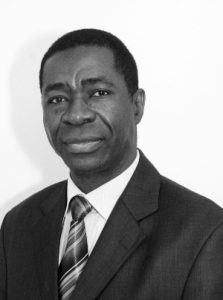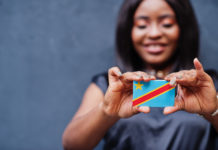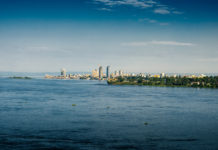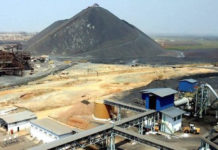A Land of Opportunities
The Democratic Republic of Congo: a land of opportunities

Ambassadeur de la République démocratique du Congo auprès du Royaume de Belgique, du Royaume des Pays-Bas, du Grand-Duché de Luxembourg et de la Mission auprès de l’Union européenne
Since its inception, the Chamber of Commerce CBL-ACP has been and remains a privileged witness as well as a barometer of economic and political changings between the DRC and Belgium.
This is the reason why I seized this opportunity, offered by the CBL-ACP, to share with your members and all the readers of this review, my thoughts on recent developments and on economic and political outlook of my country, the Democratic Republic of Congo.
To understand current developments in the Democratic Republic of Congo, we may not overlook its recent history, which is the struggle of the President of the Republic, Joseph Kabila, to bring peace everywhere in our country.
It is a founding act that allowed to reunite political institutions, to set up our young democracy and to lay the foundations for the reconstruction of the national economy.
Evolution of key benchmarks in macroeconomic sector
Recent political and economic developments in my country were characterized by the return of democratic institutions and the launch of the five priority projects, which are dedicated to the reconstruction of infrastructure (roads, railways, bridges), creation of jobs by injecting new investments, education (rebuilding schools, universities and higher education institutions), Water, Electricity and Health.
To achieve this challenge, it was, first of all, necessary to replace the fundamentals of the national economy : control the currency and overcome the inflation in order to, step by step, thanks to a tight fiscal policy, reach a level of inflation under 2% (1.674). This target must be compared to the inflation rates that prevailed a few years ago: 511% in 2000 and 135% in 2001!
Another key element is the reduction of external debt, through the attainment of the completion point of the HIPC initiative, minus 13.705 billion (USD) in 2009 to 4.073 billion US dollars in 2010.
It is noticeable that Congolese franc remains stable compared with the US dollar (now a dollar is worth 1,953 Congolese Francs), the rise in the GDP growth rate remained around 7.7% between 2010 and 2015. Today, the average growth of African countries should “be at 3.7% in 2016,” the DRC is at 6.9%, despite the continued fall of the prices of its main raw materials.
Business environment
Under the leadership of President Joseph Kabila, improving the business climate has been for several years one of the major challenges of the government of Prime Minister Augustin Matata. For example: the investment code guarantees equal treatment for domestic and foreign investors, it also simplifies the authorization procedure, prohibits nationalization or expropriation and allows the transfer of income from one country to another.
To give even more open wages, our country has joined a number of international organizations and has gained recognized competence in the field of business, such as MIGA (Multinational Investment Guarantee Agency), a World Bank agency , OHADA (Organization for the harmonization of Business law in Africa), etc.
Bilateral agreements of reciprocal protection were also signed, particularly with Belgium. Concerning the mining and forest/logging sectors, DRC joined the Transparency Initiative in the extractive industries …
Future prospects
Today, the growth of the Democratic Republic of Congo is slowed by the effects of the global crisis whose pernicious effects are felt all over the world.
Nevertheless, and given the international context, we can consider that the DRC is doing rather well and has kept most of its gains. Bhowever, aware that these bases are fragile and depend mainly on the export of raw materials, the government wants to broaden its tax base by developing other sectors such as agriculture.
This policy is based on obvious advantages: good weather conditions, 80 million hectares of arable land available and a market of nearly 80 million people (not including the countries of the subregion). The creation of the Agro-Industrial Park of Bukanga-Lonzo and other pilot projects to come confirms this agricultural development policy.
Furthermore, on a more general level, the Democratic Republic of Congo has a national strategic development plan (a true roadmap), which embodies a dynamic global strategy, a prospective, clear and legible, to include the country on the path of long-term development. It is based on a real will formally expressed by the Congolese head of state whose wish is to lead the country towards its emergence in the years 2030.
In conclusion, despite the turmoil that the Democratic Republic of Congo has experienced and the political and economic risks that have been taken, the country has already laid important groundwork for its renewal. Walking on the path of growth, its economy is attracting more and more investors from different backgrounds.
Politically, uncertainties exist, of course, the economy has slowed, it is true, but it retains its dynamism and a solid enthousiasm remains, shared by the majority of the Congolese: to preserve peace at all price…



